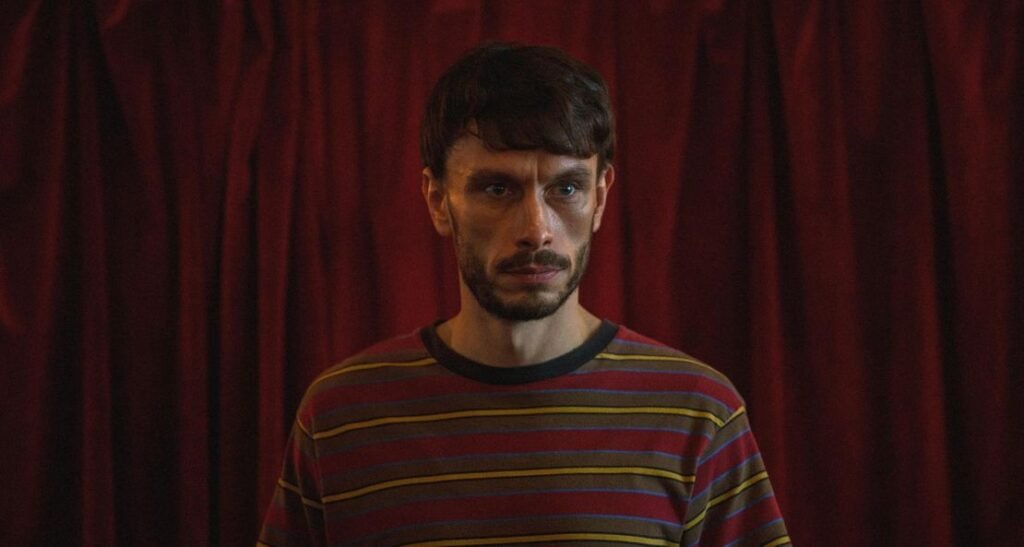Richard Gadd is not your typical entertainer. Comedian, actor, writer, and walking emotional rollercoaster, Gadd has made a career of laying his soul bare while daring you to laugh at the wreckage.
His journey from chaotic student comedian to Emmy-winning creator of Baby Reindeer is a tale of resilience, creativity, and the messy business of being human.

“I Needed the Chaos to Find My Voice”
Born in the small Scottish village of Wormit, Gadd grew up just across the river from Dundee.
His formative years were steeped in quiet, middle-class simplicity—the kind of backdrop that might make anyone crave the chaos of a stage.
By the time he was at the University of Glasgow studying English literature and theatre, he’d found an outlet in comedy.
His first gigs were, by his own admission, “punky and debauched,” often alienating peers with their frenetic energy.
Think wigs, teeth, and a comedian so nervous he’d unsettle even a room full of drama students.
But the seeds of something greater were there. Edinburgh Fringe appearances followed, with early works like Cheese & Crack Whores and Breaking Gadd blending absurdity with moments of raw honesty.
It wasn’t yet art as catharsis, but the threads were beginning to show.
“Turning Trauma Into Theatre”
In 2016, Gadd debuted Monkey See Monkey Do, a show that turned his personal trauma—the aftermath of sexual assault—into a startlingly vulnerable comedy performance.
Winning the Edinburgh Comedy Award, it marked a turning point, not just in his career but in how he approached storytelling.
Gone were the props and outlandish antics. What replaced them was stripped-down honesty and a treadmill (yes, really).
“It was like taking a tumour out of my body,” Gadd once said about transforming his pain into performance.
Audiences responded with standing ovations, and Gadd found a new way to connect—not by entertaining, but by exposing.
“When Life Becomes Art”
“Baby Reindeer was the hardest thing I’ve ever done,” Gadd admitted in an interview, reflecting on the emotionally taxing process of revisiting his trauma for the screen.
“I thought if I’m going to do this, it has to be brutally honest.”
The show began as a one-man stage play chronicling Gadd’s experience with a stalker, blending the personal with the absurdly unsettling.
When Netflix adapted it into a seven-episode series earlier this year, the show exploded in popularity. Suddenly, Gadd was everywhere—and so was his story.
The show’s success didn’t come without complications. Legal battles with the real-life woman portrayed as the stalker dominated headlines, but Gadd remained resolute in defending the truth of his narrative.
Meanwhile, the series sparked a surge in referrals to abuse and stalking charities.
We Are Survivors, a charity supporting male survivors of sexual abuse, reported a 200% increase in website visits and an 80% rise in referrals after the release of Baby Reindeer.
Notably, over half of these referrals cited the show as their reason for seeking help.
“If anything good came out of it, it’s that,” Gadd stated, highlighting its broader social impact.
“Reclaiming the Pieces of Himself”
Even as he moved past Baby Reindeer, Gadd found himself grappling with the emotional toll of baring his soul on such a public stage.
“You give so much of yourself away that you almost don’t recognise what’s left,” he told British GQ. “There comes a point where you have to reclaim your own narrative.”
Half Man (formerly Lions), directed by Alexandra Brodski, a TV series that explores masculinity and sibling dynamics through the lens of a fictional narrative marks a new chapter in Gadd’s creative journey.
Co-starring Jamie Bell, the series delves into decades of shared history between estranged brothers, capturing moments of reconciliation and tension.
“It’s about what it means to be a man in a world where the rules are constantly changing,” Gadd explained.
The series, set in a rapidly evolving Scotland, showcases Gadd’s ability to step away from autobiography while retaining his signature depth.
Gadd’s journey has been one of transformation. If Monkey See Monkey Do and Baby Reindeer were about purging trauma, his recent work signals a shift toward reclaiming balance.
In interviews, he’s hinted at a desire to redefine the boundaries of his storytelling and his personal life.
“I think I might have to have my life for myself for a bit now,” he’s said, reflecting on the toll of making deeply personal art.
It’s a departure from autobiography, but if Gadd’s past work is any indication, it will be anything but straightforward.
“Why His Flaws Make Him Unforgettable”
For Richard Gadd, the line between art and life is razor-thin—a balancing act that has propelled him to the forefront of contemporary storytelling.
Reflecting on his upcoming series, he remarked, “It’s freeing to finally create something that’s not just about me. It’s about stepping back and looking at the bigger picture.”
As he ventures into Half Man, Gadd leaves behind the self-reflective lens of his earlier works without abandoning the raw honesty that defines him.
His ability to embrace the cracks in his own story while examining the fractures in the world around him sets him apart.
Richard Gadd’s art doesn’t just sit with you—it stirs, provokes, and stays. And perhaps that’s what makes it unforgettable.
Richard Gadd’s ability to dive headfirst into uncomfortable truths—his own and society’s—has made him one of the most compelling storytellers of his time.
But with Half Man on the horizon, the question isn’t whether he’ll deliver another standout work.
It’s how he’ll do it while navigating the line between performance and self-preservation.
For Gadd, the mess is the point. His art doesn’t just reveal the cracks; it asks what happens when you try to build something beautiful from them.
And as he steps into this new chapter, it seems he’s finding ways to show that there’s strength, and even art, in not having all the answers yet.


